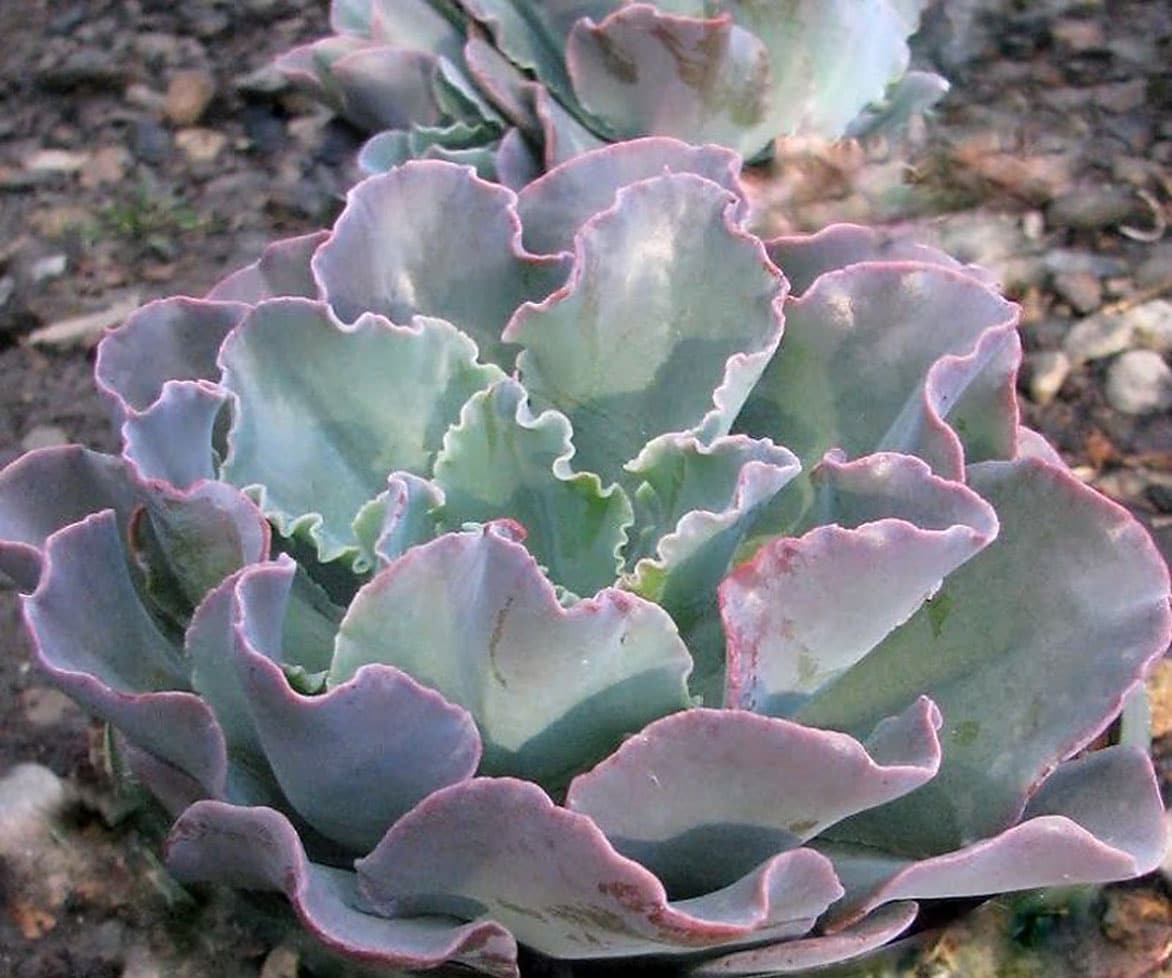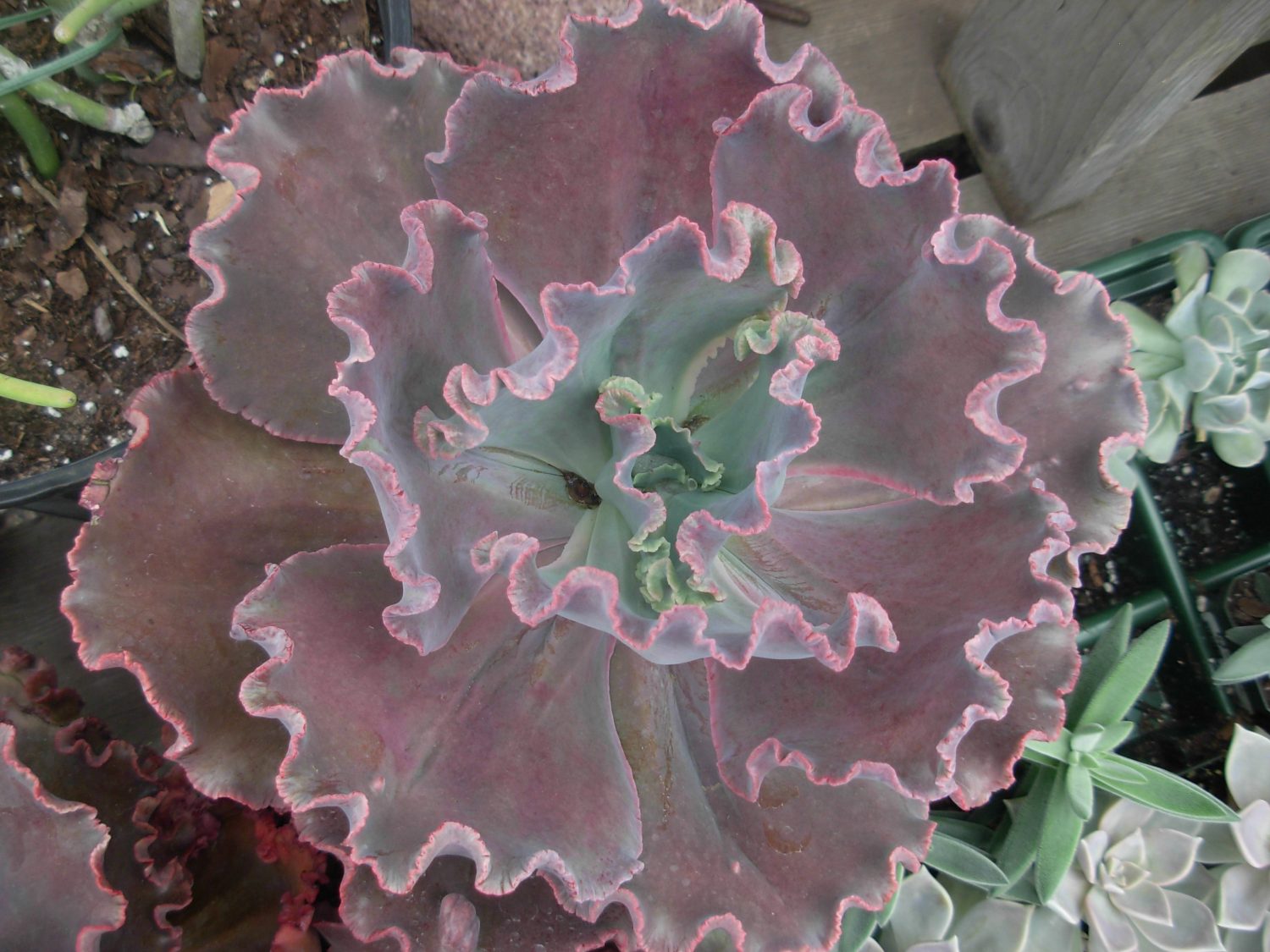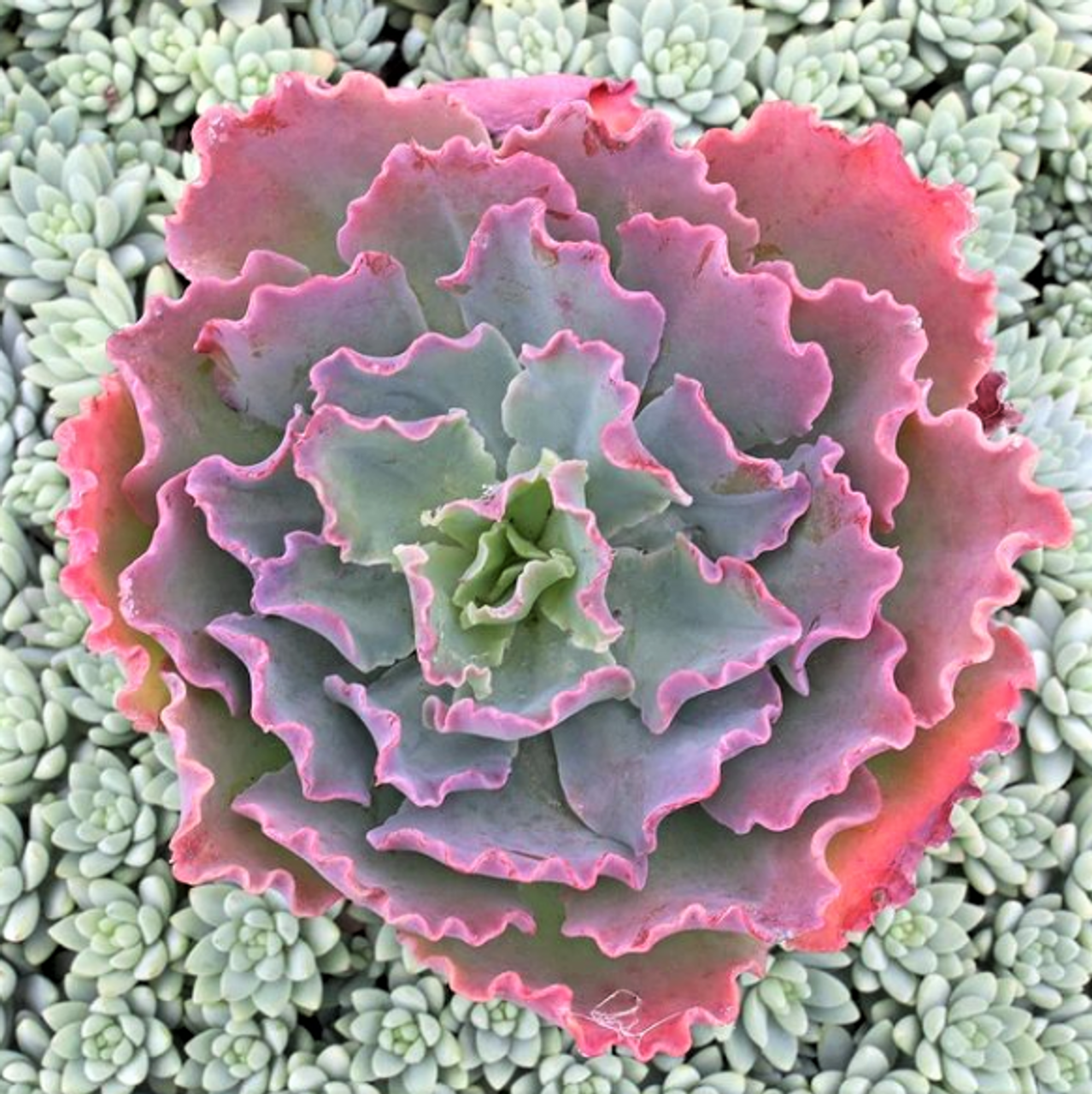This large blue-green succulent will develop red edges when it is exposed to direct sunlight. In the summertime, bright red-orange flowers may appear.
Table of Contents
Care and Propagation Information
Echeveria ‘Ruffles’ is an ideal choice for rock gardens and succulent displays due to its drought and deer resistance.
Watering
For Echeveria ‘Ruffles’, the most suitable method of watering is the “soak and dry” technique, which involves allowing the soil to dry out completely in between waterings. This is the most common approach for caring for succulents.
Where to Plant
If you live in an area where temperatures fall below 30° F (-1.1° C), it’s advisable to keep Echeveria ‘Ruffles’ in a container that can be brought indoors during colder times of the year. This succulent will thrive when placed in an area with full to partial sunlight, and it can be supplemented with a grow light if necessary.
Put a plant in a spot in your garden that receives 6 hours of sunshine each day.
How to Propagate Echeveria ‘Ruffles’
Echeveria ‘Ruffles’ can be propagated by taking cuttings or by planting leaves.
Cuttings
To propagate ‘Ruffles’, take a sterile, sharp knife or pair of scissors and cut a stem from the main plant. Let the cut end dry for several days until a callous forms. Then, put the stem in well-draining soil and water it only once the soil has dried out completely.
Leaves
To ensure successful propagation of ‘Ruffles’, carefully remove a leaf from the mother plant, making sure not to leave any of the leaf attached to the stem.
Let the leaf sit in an area with good air flow for a few days so that the cut end can heal and form a callus, then place it in a pot filled with soil that drains well. Water the pot when the soil has completely dried out.
Care and Propagation Information
General Care for Echeveria ‘Ruffles’
Watering
For Echeveria ‘Ruffles’, the most suitable method of watering is the “soak and dry” technique, which involves allowing the soil to dry out completely in between waterings. This is the most common approach for caring for succulents.
Where to Plant
If you live in an area where temperatures fall below 30° F (-1.1° C), it’s advisable to keep Echeveria ‘Ruffles’ in a container that can be brought indoors during colder times of the year. This succulent will thrive when placed in an area with full to partial sunlight, and it can be supplemented with a grow light if necessary.
Put a plant in a spot in your garden that receives 6 hours of sunshine each day.
How to Propagate Echeveria ‘Ruffles’
Echeveria ‘Ruffles’ can be propagated by taking cuttings or by planting leaves.
Cuttings
To propagate ‘Ruffles’, take a sterile, sharp knife or pair of scissors and cut a stem from the main plant. Let the cut end dry for several days until a callous forms. Then, put the stem in well-draining soil and water it only once the soil has dried out completely.
Leaves
To ensure successful propagation of ‘Ruffles’, carefully remove a leaf from the mother plant, making sure not to leave any of the leaf attached to the stem.
Let the leaf sit in an area with good air flow for a few days so that the cut end can heal and form a callus, then place it in a pot filled with soil that drains well. Water the pot when the soil has completely dried out.
FAQ
How do you know if Echeveria needs water?
The shriveled appearance of the leaves on your Succulent is a sign that it needs more water. As the plant uses up its stored moisture, it is unable to replenish itself and is in need of more hydration to function properly.
How do you propagate Echeveria ruffles?
To propagate ‘Ruffles’ from leaves, twist a leaf from the mother plant so that none of it remains on the stem. Let the leaf dry for several days until the end callouses over, and then put it in soil that drains well.
How long can Echeveria go without water?
Indoor succulents can go for up to three months without needing to be watered, as their lack of exposure to the elements, such as wind and sunlight, makes the soil take longer to dry out compared to outdoor succulents. In cooler climates, the soil can remain moist for an extended period of time throughout the fall and winter.
Does Echeveria need direct sunlight?
It is essential that you put your echeveria in a window where it gets at least six hours of sunlight a day. Without adequate, direct sunlight, your plant will start to stretch out and not keep its shape as well.
How often should I water an Echeveria?
Every two months



